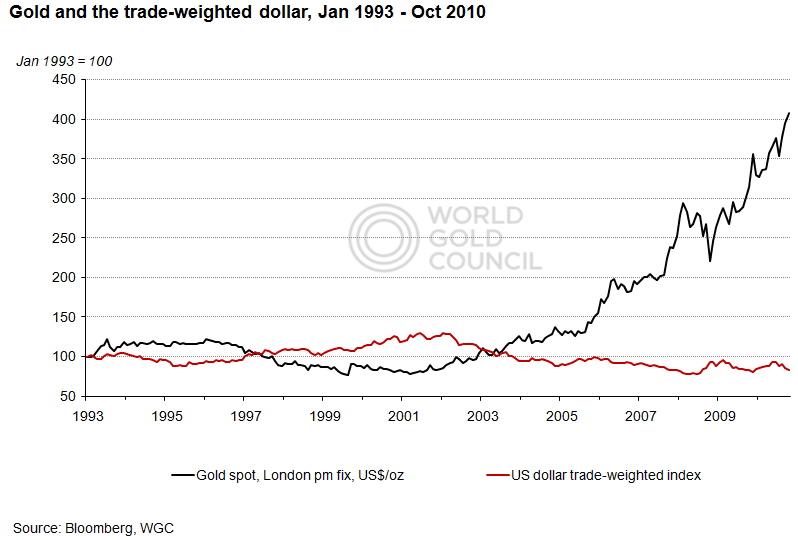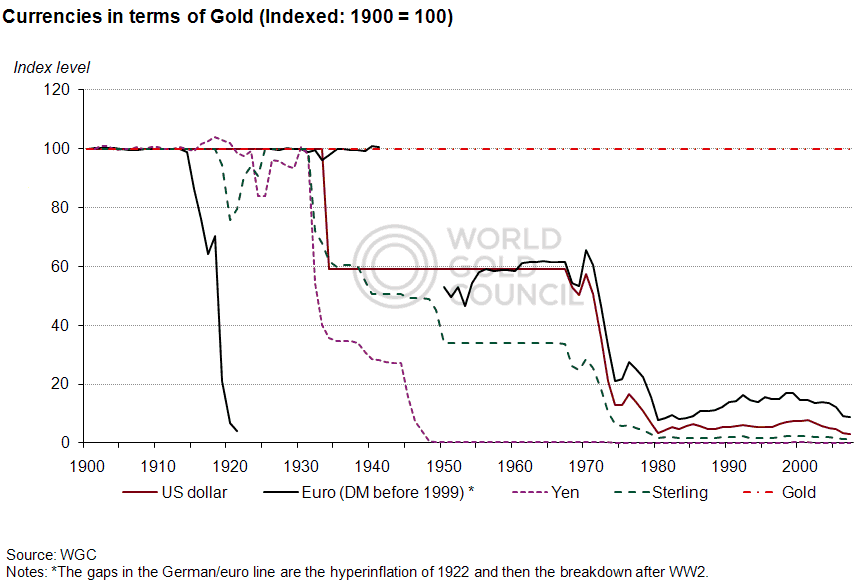Quality and Certainty
During the first months of the financial crisis, the price of gold began its infamous rise to nearly $2,000 an ounce. Investors looking for a safe haven as the global economy collapsed found a natural safe haven in gold. As an asset class, gold has a long history as a dependable hedge against market volatility. Backed by its own intrinsic value, gold does not depend on a central bank or a stock exchange. It is relatively supply inelasticity gives investors in gold a greater degree of certainty than investors in other precious metals.
Gold, however, is much more than a safe haven asset. Recent research shows that having 5% to 10% of total investment in gold is an effective contribution to a well-diversified portfolio. It is a prudent investment during times of both inflation and deflation. Given the precariousness of the current world economy, gold provides investors with stability even if with a slight negative return. There is much to suggest, however, that the price of gold will continue to climb in 2012.
Inflation Hedge
In a recent statement, Federal Reserve Chairman, Ben Bernanke, announced that the Fed would continue its zero interest rate policy through 2014. The announcement comes after last fall’s “Operation Twist,” an FOMC action that has flattened the US treasury yield curve and lowered long-term government bond yields. The Fed’s balance sheet enlarging “quantitative easing” program has the potential to resume in 2012 according to one prominent Fed official.
Although some analysts are quick to dismiss concerns inflation by citing sluggish growth in the supply of the world’s reserve currency, it should be noted that inflationary episodes in economic history occur after a delay of several months or years from the time that new money has been made available by central banks.
“New dollars” created during quantitative easing have been largely confined to the US securities market, as recently overleveraged banks are hesitant to lend to businesses and consumers despite low rates. Thus while real CPI inflation has yet to materialize, the potential for inflation has been laid by the Fed’s balance sheet expansion. Commodities excluded from the CPI (e.g. food, energy, metals) have already been rising since the monetary expansion began.
Long-term Security
In addition to serving as a hedge against inflation, gold tends to gain value during inflationary periods. This potential for future inflation to place upward pressure on the price of gold has one reputable analyst forecasting that gold will break through the $2,000 per ounce ceiling in 2012. Four years into the economic slowdown, the flight to quality, which originally supported the price of gold, has given way to a steady growth in value driven by monetary policy.
Generally, when the price of gold rises in response to monetary phenomena, it maintains its value. In this sense, the price of gold can be viewed as a ratchet, increasing consistently without major drops. While the potential for major gains in gold is relatively low, excluding the unlikely case of a mass flight to quality, the potential for major losses is very low. Given the uncertainty surrounding the sustainability of current market growth, gold promises to reduce the risk exposure of an investment portfolio.
How to invest
There are many ways to diversify a portfolio by investing in gold. Investors can purchase physical gold coins, bullion, certificates, stock in gold mines, or gold backed ETFs to name only a few common methods. Additionally, gold funds and structured products are available to meet investors’ specific needs. Potential investors with questions about how to make gold a part of their portfolio should talk with a financial advisor about the best way to begin investing in gold.



